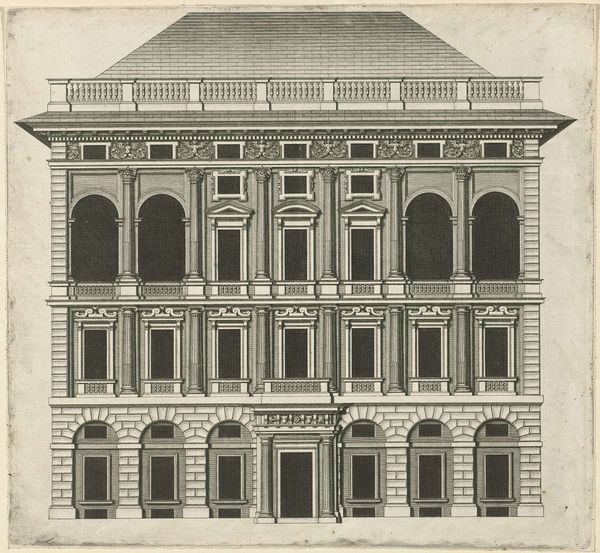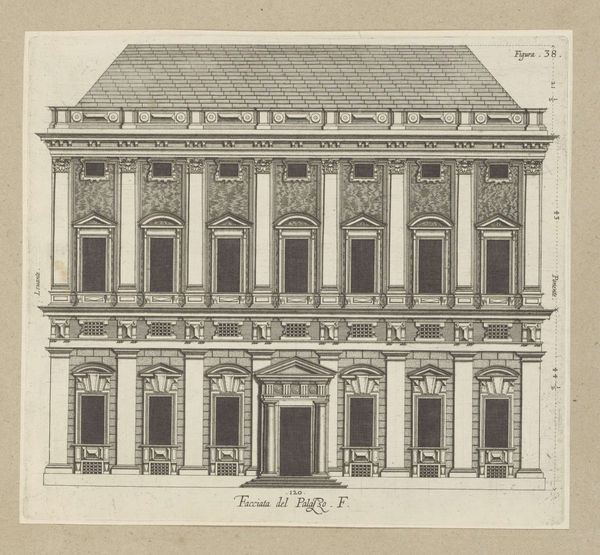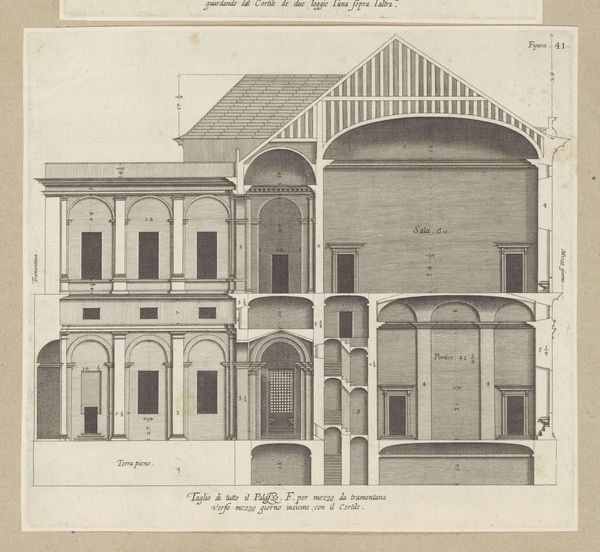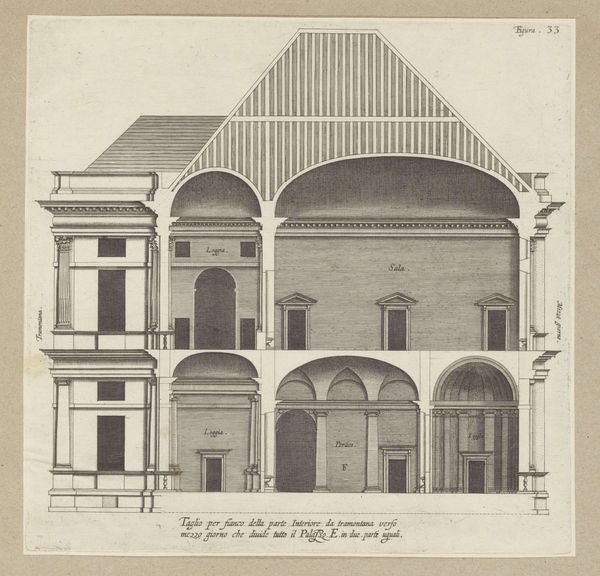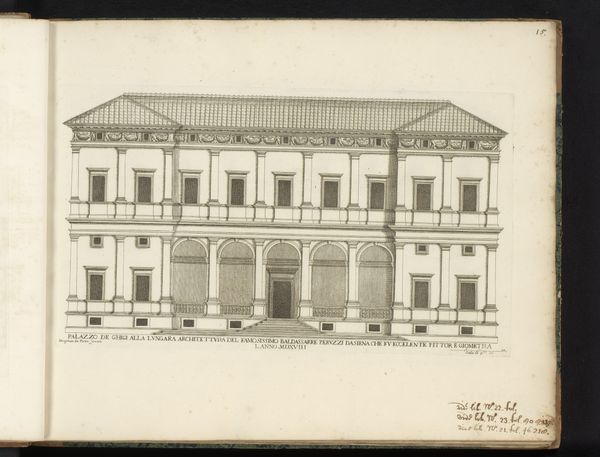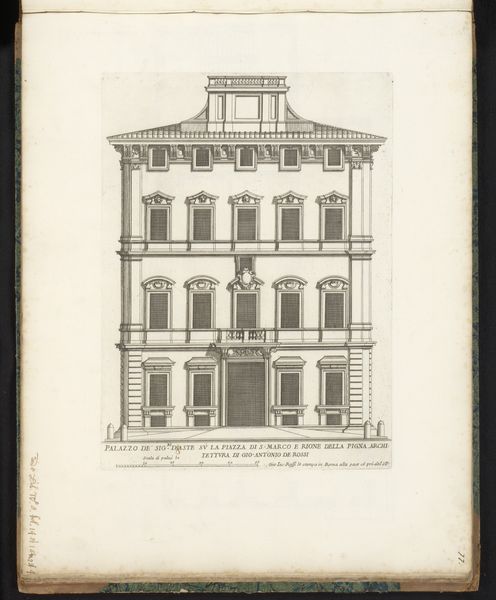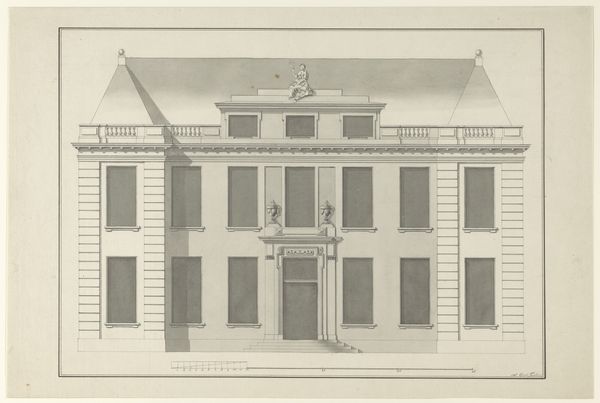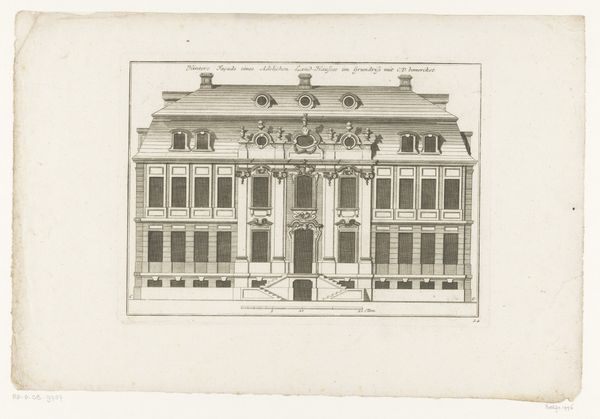
Opstand van de façade van de villa Pallavicino delle Peschiere te Genua 1622
0:00
0:00
nicolaesryckmans
Rijksmuseum
print, engraving, architecture
#
baroque
# print
#
geometric
#
cityscape
#
engraving
#
architecture
Dimensions: height 242 mm, width 266 mm, height 583 mm, width 435 mm
Copyright: Rijks Museum: Open Domain
Editor: Here we have Nicolaes Ryckmans' engraving from 1622, "Opstand van de façade van de villa Pallavicino delle Peschiere te Genua." It's strikingly symmetrical, almost like an architectural blueprint. What stands out to you when you look at it? Curator: The precise linearity, the relentless geometric arrangement, presents us with a powerful essay in controlled space. Consider the stark contrast between the solid, shaded rectangular forms of the windows and the graceful curves of the arches. How does that tension speak to you? Editor: It creates a sort of restrained energy. The arches want to flow, but they're held in check by all those straight lines. Is that tension a feature of Baroque style architecture generally? Curator: Indeed, the tension arises from the push-and-pull dynamic between classical ideals of order and the emerging Baroque aesthetic. Look closely at the pillars - how do their placement and proportional relationships dictate the reading of the façade? Editor: They create rhythm, separating the windows into distinct units, but still adhering to the strict symmetry. So, it's not just decorative; it structures how we perceive the building. It seems as if the architect wanted to present an almost mathematical elevation. Curator: Precisely. Ryckmans, through the clarity of his engraving, dissects and presents to us the very logic underpinning the architectural design. What thoughts does that provoke? Editor: I suppose I hadn't considered how much of an argument a simple building façade could make. This makes me want to seek out more architectural engravings. Curator: Yes. It invites us to decode not just the building, but the mindset that conceived it. We begin to grasp that a well-ordered facade embodies ideals.
Comments
No comments
Be the first to comment and join the conversation on the ultimate creative platform.

